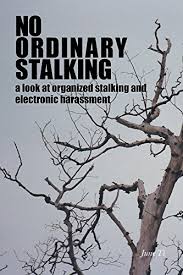There have been several adoption twists in television shows of late to the point where I almost expect it. Recently, it’s been part of a Grace and Frankie episode where Coyote meets his birth mother but she does not want to expose this secret to her new family. This is common in reunion stories. In the Netflix series Safe, based on a Harlan Coben novel, a daughter stalks her biological father in an effort to reveal their secret relationship. This one thankfully turns out positive for both of them. Adoptees and bastard children have certainly risen to the forefront of modern entertainment drama.
I’m obviously more sensitive to these situations than most because I am an adoptee, but first a lovable bastard. I have admittedly stalked and written to my birth mother, but have received no acknowledgment. I even circumvented the scenario of keeping the secret discreetly between mother and son, by also writing her family. Still no response. On the other hand, the birth father has long passed, but his family was graciously receptive to my inquiries. I don’t know where to go from here?
I could have popped-up during a different chapter of their lives, but there were no inheritance issues, rights to the throne, or other claims that are too often Hollywood-ized. I want nothing except some questions answered and perhaps some insight into health genetics. I’ve tried to find some of this information by building an Ancestry.com family tree and finding common DNA connections. I have now identified about 200 DNA relatives on my Jerry Banister Family Tree, including a separate test that I took on 23andMe. There are now over 22,000 people that have been added to my branches just to find these 200 close connections. It’s a very cumbersome process that has taken over 3 years, considering that in order to find one match on the tree it’s necessary to add 100 more names.
The challenge is that most all the voluntary DNA testing has been in recent years, excluding those who are no longer living and never had access or reason for testing. This means that the majority of my DNA connections are with younger generations whose identities are often only revealed in the obituaries of their parents or grandparents or finding more intrusive sources. Ancestry was designed to maintain privacy for the living, so seeking information through other member trees is often marked as “private.” You need permission from family members to see the newest members. I haven’t really been accepted into the Ban(n)ister family, with a few exceptions, so my work might be considered to most as stalking – just like in the movies.

Leave a Reply